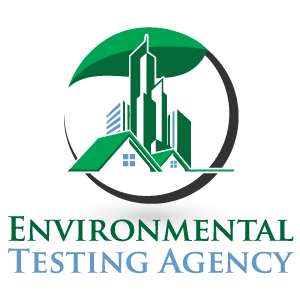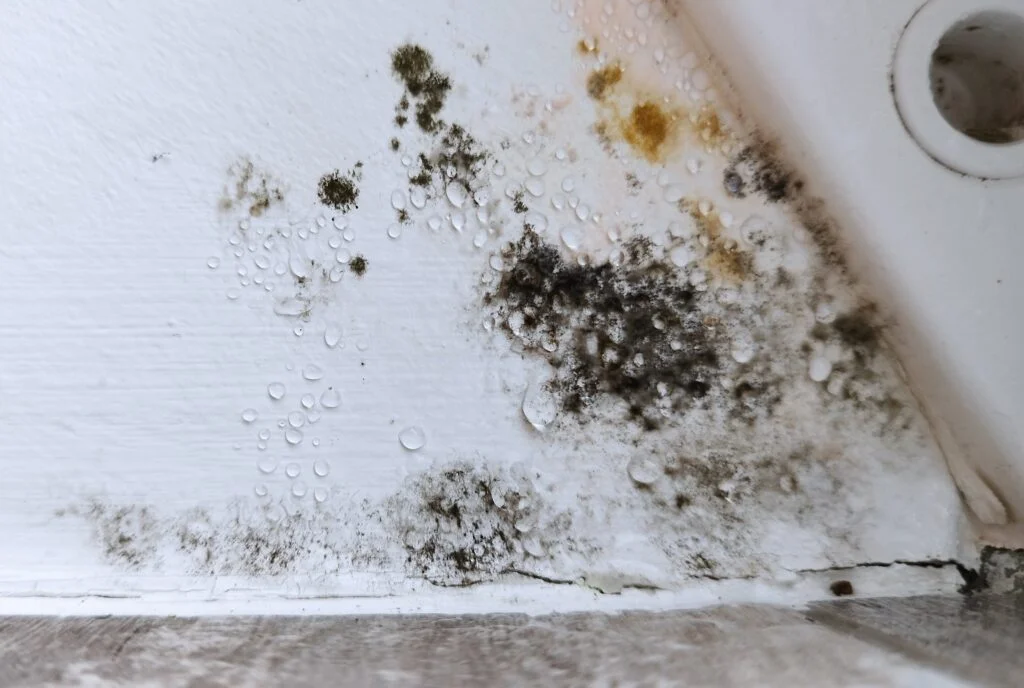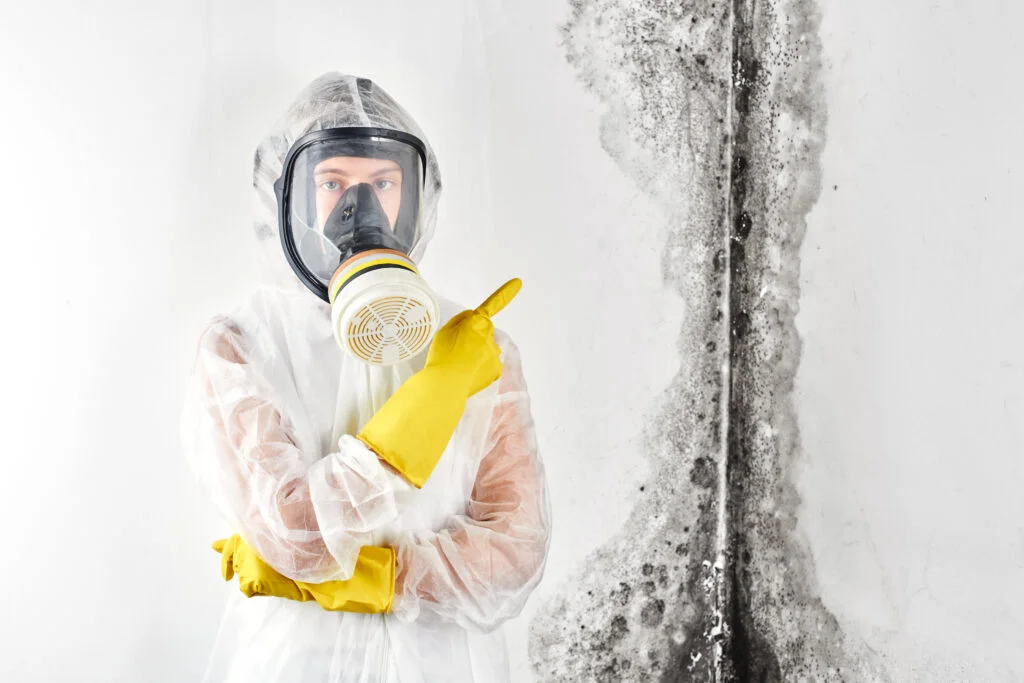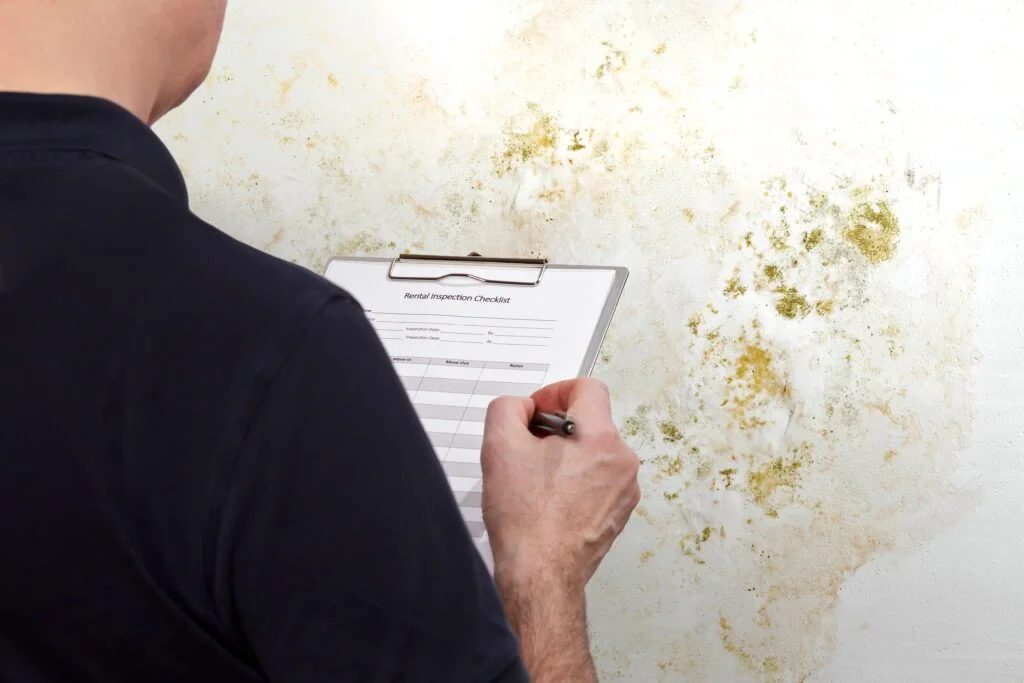Ceiling Mold Inspection & Testing Services In Florida
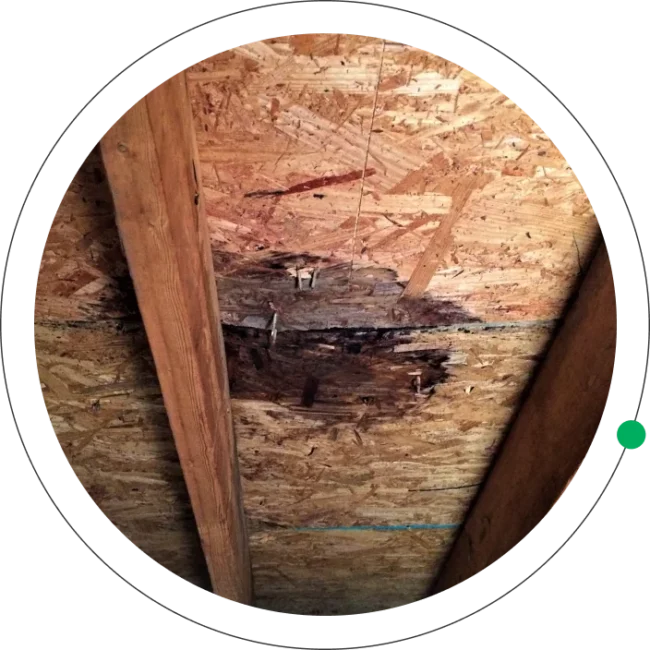
Why are ceilings a place prone to mold growth?
Ceiling mold is a type of mold that grows on the underside of your ceiling. It usually starts as a small, harmless spot but can spread quickly if not taken care of. Mold loves damp, dark places, making ceilings in Florida’s humid climate perfect for it to develop.
Additionally, ceiling mold often results from moisture problems, like a leaky roof, poor ventilation, or plumbing issues. When moisture gets into your ceiling, it creates a great environment for mold to grow. Over time, this mold can spread, causing stains and affecting the air quality in your home or building.

Common signs that indicate the presence
of Ceiling Mold are

Musty Odor
A constant musty or earthy smell in your home, especially around the ceiling, can be a sign of mold. If you smell this, it’s a good idea to check for mold.

Visible Mold
If you see dark spots, stains, or strange colors on your ceiling, it could be a sign of mold. These stains often mean there’s moisture where it shouldn’t be.

Water Stains
Yellowish or brownish discoloration that often precedes mold growth.

Peeling Paint
If the paint on your ceiling is peeling, bubbling, or cracking, mold might be the cause. This often means there’s moisture trapped behind the paint.

Condensation
Increased moisture or droplets on the ceiling surface, particularly in areas with high humidity.

Health Symptoms
If you or your family are experiencing new allergies, coughing, or breathing problems, it might be due to mold. Mold can affect indoor air quality and cause health issues.

Discoloration
Any unusual staining or fading of ceiling materials, often a precursor to visible mold growth.
Tips to Identify Ceiling Mold
- Check for dark or colored patches on the ceiling.
- Look for signs of water damage or discoloration.
- Notice any persistent, musty odors, a common sign of mold.
- Be aware of any increase in allergic reactions or respiratory issues when in the affected room.
- Flood events or significant water intrusion can saturate the carpet, making it prone to mold if not dried immediately.
- Look for signs of condensation on the ceiling, especially after showers or cooking.
- Inspect for peeling, cracking, or bubbling paint.
- Check for any signs of plaster or drywall softening or breaking down.
- Ensure room vents are not obstructed, promoting adequate airflow.
- Consider using a mold testing kit or hiring a professional for a more thorough inspection and analysis.
Regularly inspecting your ceiling and maintaining proper ventilation, insulation,
Regular maintenance, immediate attention to spills and leaks, and ensuring proper ventilation can help prevent mold growth in carpeted areas.
Want to avoid Ceiling Mold?
ETA tips for preventing it
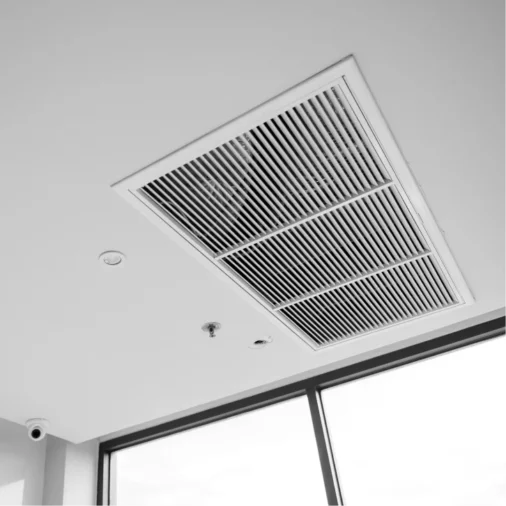
Ensure Proper Ventilation
- Use ceiling or room fans to improve air circulation, especially in high-moisture areas like bathrooms and kitchens.
- Install exhaust fans to vent outside, removing moist air from cooking and bathing.
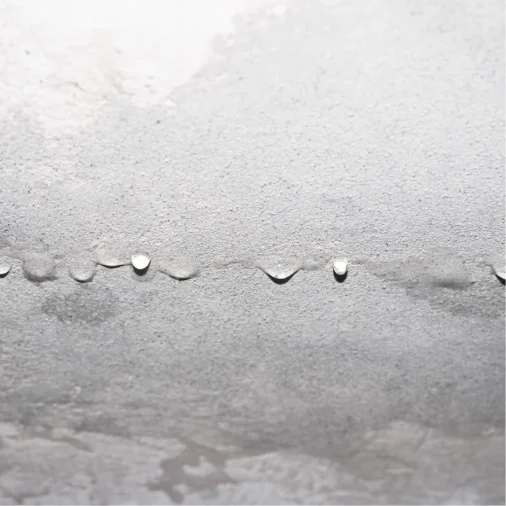
Control Moisture
- Address water leaks from roofs or upper-floor plumbing immediately.
- Use a dehumidifier in humid climates to maintain indoor humidity below 60%.

Insulate Properly
- Make sure your attic and ceilings are properly sealed and insulated to prevent condensation.

Regular Inspections
- Schedule regular inspections for your roof, plumbing, and HVAC systems to catch any problems early.
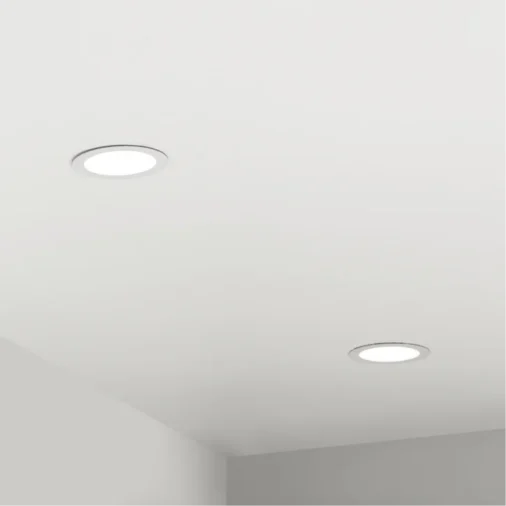
Keep Ceiling Surfaces Clean and Dry
- Regularly clean ceiling surfaces to prevent dust and organic materials from feeding mold.
- Address condensation issues immediately to keep the surface dry.

Seal Gaps and Cracks
- Seal any potential entry points for moisture, such as gaps around light fixtures or air vents.
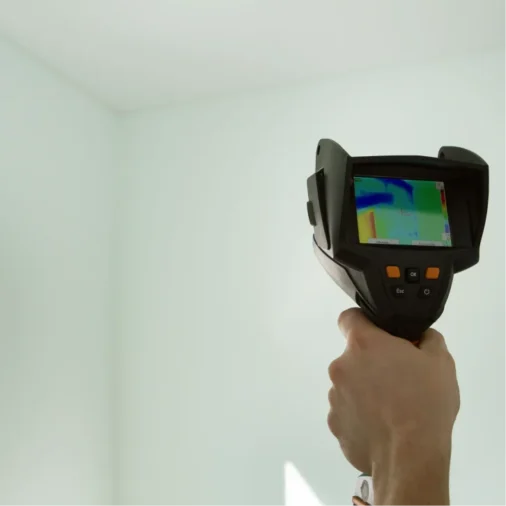
Monitor Humidity Levels
- Keep indoor humidity between 30-50% with a dehumidifier or air conditioner.
Choose ETA for Expert Mold Testing
If you’re dealing with mold in your ceiling, ETA Mold is the top choice for inspection and testing in Florida. Our experienced experts have years of spotting and handling mold, so we know exactly what to look for and how to manage it. We conduct thorough inspections, including initial checks and lab tests, to ensure no mold issues go unnoticed. You’ll stay informed with clear updates and detailed reports, giving you a full picture of what’s happening and what needs to be done.
Professional Mold Inspection & Air
Quality Testing Services in South Florida.
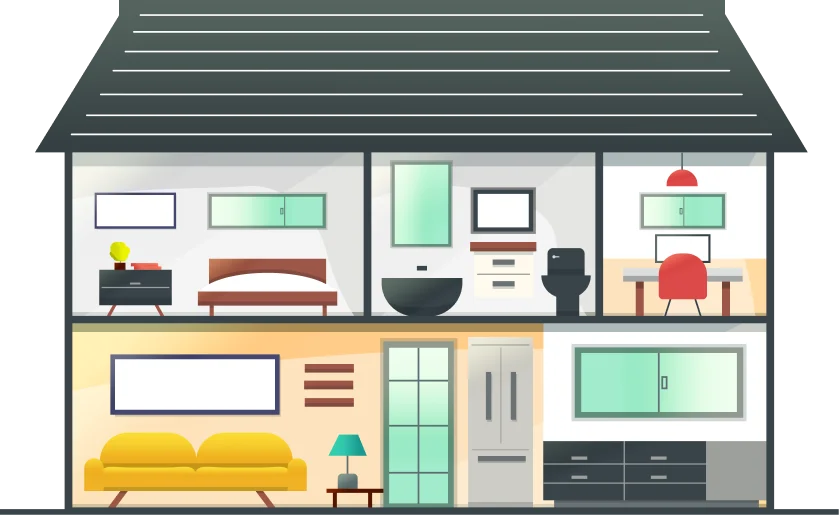
The Mold Inspection Process

DETECTION
We’ll discover the source of infrastructure damage. This is imperative and also the first step in our process.

TESTING
We send all samples to an accredited laboratory. Our labs know this is our priority and will give the most detailed results possible.

ASSESSMENT
Our certified and licensed assessors will compile a comprehensive report providing our documentation and lab analysis. All information comes with a scope of work.

Why Choose Environmental
Testing Agency?
Our team is comprised of industry-certified experts with extensive knowledge and experience in environmental testing. We utilize the latest technology and methodologies to ensure accurate and reliable results, making us leaders in the field.
Expertise
We are committed to providing exceptional customer service. Our team is responsive, thorough, and dedicated to assisting clients through every step of the testing process. We prioritize clear communication and tailored solutions to meet your specific needs.
Customer Service
Quality is at the core of everything we do. From rigorous testing procedures to detailed reporting, we ensure that all services meet the highest standards. Our commitment to quality helps clients make informed decisions based on dependable data.
Quality
Licensed, Certified,
and Insured Mold Inspection
and Air Quality Testing Company.

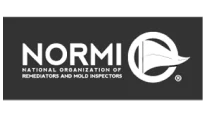



Before Booking an Air Quality Test
and Mold inspection Services
Receive $50 off!

Ceiling Mold FAQ’S
Yes, black mold on the ceiling can be harmful. It can produce substances that might cause health problems, especially for people with breathing issues, allergies, or weakened immune systems. If you’re around black mold for a long time, you might experience symptoms like coughing and wheezing, and in severe cases, more serious health issues. It’s important to deal with black mold quickly and get professional help to keep your environment safe.
Ceiling mold usually smells musty and earthy, like wet or damp wood. If you notice a strong, lingering musty odor around your ceiling, it could mean there’s mold growing there. Finding and fixing the source of the smell can help improve the air quality in your home and prevent more mold problems.
If you see mold on your ceiling, it’s best to handle it quickly. First, give us a call for a professional inspection. We’ll check how bad it is and figure out the best way to fix it. Don’t try to clean it yourself, as that might spread mold spores around.
Yes, mold in your ceiling can make you sick. Breathing in mold spores can cause problems, especially if you have allergies, asthma, or other breathing issues. You might experience coughing, wheezing, stuffy nose, itchy eyes, or skin rashes. Long-term exposure can lead to more serious health issues. If you think there’s mold in your ceiling, it’s important to deal with it quickly to keep yourself healthy.
Painting over mold isn’t a good idea. While it might hide the mold for a while, it doesn’t fix the problem and the mold can come back. You should clean and remove the mold first. Make sure to fix any moisture issues and let the ceiling dry completely before painting to help keep the mold from coming back.
A typical ceiling mold inspection can take a few hours, depending on the size of the area and the complexity of the issue. We’ll work efficiently to ensure a thorough inspection while minimizing disruption to your daily life.
We send samples to a certified lab for analysis to determine the type and level of mold present. This helps us understand if the mold poses health risks and guides our recommendations for addressing the issue.
Lab results from mold tests typically take a few days to a week. We’ll provide you with a detailed report once the analysis is complete.
Yes, mold on the ceiling can cause damage and might weaken the structure of your home. It’s important to take care of mold problems quickly to prevent bigger issues and avoid expensive repairs.
Cleaning mold yourself can be risky for your health, especially if you don’t wear the right protective gear. When you disturb mold, it can release tiny spores into the air, which might make the situation worse and lead to health problems. It’s usually safer to let professionals handle mold removal.
Areas We Serve
In Florida
1. Miami Dade
- Coral Gables
- Coconut Grove
- Miami Beach
- Star, Palm & Hibiscus Island
- Key Biscayne
- Keystone Islands
- San Souci
- Miami Shores
- Pinecrest
- Brickel
- Bal Harbor
- Bay Harbor Islands
- Indian Creek
- Surfside
- Eastern Shores
- Sunny Isles
- Aventura
- Golden Isles
- Golden Beach
- The Roads
2. Broward
3.Palm Beach
- Royal Palm Beach
- Lake Worth
- Lantana
- Boca Raton
- Boynton Beach
- Manalapan
- Singer Island
- South Palm Beach
- North Palm Beach
- Tequesta
- Highland Beach
- Ocean Ridge
- Country Club Acres
1. Miami Dade
- Coral Gables
- Coconut Grove
- Miami Beach
- Star, Palm & Hibiscus Island
- Key Biscayne
- Keystone Islands
- San Souci
- Miami Shores
- Pinecrest
- Brickel
- Bal Harbor
- Bay Harbor Islands
- Indian Creek
- Surfside
- Eastern Shores
- Sunny Isles
- Aventura
- Golden Isles
- Golden Beach
- The Roads
2. Broward
- Bonaventure
- Hallandale
- Miramar
- Hillsboro Beach
- North Lauderdale
- Coconut Creek
- Hollywood
- Sea Ranch Lakes
- Oakland Park
- Sunrise
- Coral Springs
- Parkland
- Dania
- Lauderdale By The Sea
- Pembroke Park
- Tamarac
- Davie
- Pembroke Pines
- University Park
- Deerfield Beach
- Plantation
- Weston
- Fort Lauderdale
- Lighthouse Point
- Pompano Beach
- Wilton Manors
3. Palm Beach
- Royal Palm Beach
- Lake Worth
- Lantana
- Boca Raton
- Boynton Beach
- Manalapan
- Singer Island
- South Palm Beach
- North Palm Beach
- Tequesta
- Highland Beach
- Ocean Ridge
- Country Club Acres
- Jupiter
- Palm Beach
- Jupiter Inlet Colony
- Palm Beach Gardens
- Wellington
- Jupiter Island
- Palm Beach Shores
- Delray Beach
- Palm Springs
- Lake Clarke Shores
- Pelican Lake
- West Palm Beach

